|
Books Should Be Free Loyal Books Free Public Domain Audiobooks & eBook Downloads |
|
|
Books Should Be Free Loyal Books Free Public Domain Audiobooks & eBook Downloads |
|
Adventure Books |
|---|
Book type:
Sort by:
View by:
|
By: Lewis Carroll (1832-1898) | |
|---|---|
 Alice's Adventures in Wonderland
Alice's Adventures in Wonderland
An acclaimed children’s classic depicting the odd, but riveting journeys of the curious Alice as she explores the surreal world of Wonderland. Written by Charles Lutwidge Dodgson or better known under his pseudonym Lewis Caroll, this episodic novel is assembled in twelve chapters each containing a prominent adventure. The departure from logic and its embracement of pure imagination is what makes Alice’s Adventures in Wonderland a model for fantasy novels and a timeless classic. The novel begins when the self-aware young Alice, who grows bored of sitting by the river with her sister, and spots a peculiar looking rabbit, dressed in a waistcoat... | |
By: Mark Twain (1835-1910) | |
|---|---|
 The Adventures of Tom Sawyer
The Adventures of Tom Sawyer
If ever there was a story written based unabashedly on adventure and trouble, this is it. There are treasure hunts and murderers on the run in this book that will keep you spellbound. Tom and his half-brother, Sid, lived with their aunt, Polly. Tom was a boisterous young fellow who constantly found himself in rather awkward situations that landed him into trouble. These situations were however exceedingly hilarious. On one occasion, Tom dirtied his clothes in a fight and his punishment was to whitewash the fence the following day... | |
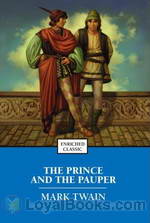 The Prince and the Pauper
The Prince and the Pauper
A poor young boy from the slums of London watches a royal procession pass, with the youthful Prince of Wales riding at its head. He ventures too close and is caught and beaten by the Prince's guards. However, the young royal stops them and invites the vagrant to the palace. Here the two boys sup alone and are stunned to discover that they bear a startling resemblance to each other. The Prince is Edward, long awaited heir of the monarch, Henry VIII, while the vagrant is Tom Canty, the son of a thief and a beggar... | |
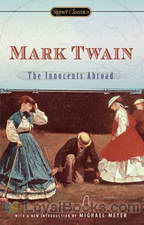 The Innocents Abroad
The Innocents Abroad
When you dive into Mark Twain’s (Samuel Clemens’) The Innocents Abroad, you have to be ready to learn more about the unadorned, ungilded reality of 19th century “touring” than you might think you want to learn. This is a tough, literary journey. It was tough for Twain and his fellow “pilgrims”, both religious and otherwise. They set out, on a June day in 1867, to visit major tourist sites in Europe and the near east, including Greece, Turkey, Lebanon, Syria, “the Holy Land”, and Egypt... | |
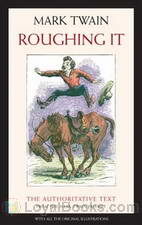 Roughing It
Roughing It
The semiautobiographical travel memoir records Twain’s, more or less, personal journey across the Wild West in search of adventure while exploring variable locations. Accompanying his brother on what becomes a trip of a lifetime, the young Samuel Clemens finds himself in many different vocational roles as he explores and observes the magnificence of the American West. Not refraining from the usual social commentary, Twain directs criticism on various social and moral issues which he approaches through his sly and witty style... | |
 A Tramp Abroad
A Tramp Abroad
A Tramp Abroad is a work of non-fiction travel literature by American author Mark Twain, published in 1880. The book details a journey by the author, with his friend Harris (a character created for the book, and based on his closest friend, Joseph Twichell), through central and southern Europe. While the stated goal of the journey is to walk most of the way, the men find themselves using other forms of transport as they traverse the continent. The book is often thought to be an unofficial sequel to an earlier Twain travel book,The Innocents Abroad... | |
 Tom Sawyer Abroad
Tom Sawyer Abroad
Tom Sawyer Abroad is a novel by Mark Twain published in 1894. It features Tom Sawyer and Huckleberry Finn in a parody of Jules Verne-esque adventure stories. In the story, Tom, Huck, and Jim set sail to Africa in a futuristic hot air balloon, where they survive encounters with lions, robbers, and fleas to see some of the world’s greatest wonders, including the Pyramids and the Sphinx. Like Adventures of Huckleberry Finn and Tom Sawyer, Detective, the story is told using the first-person narrative voice of Huck Finn. | |
 Tom Sawyer, Detective
Tom Sawyer, Detective
Tom Sawyer, Detective is an 1896 novel by Mark Twain. It is a sequel to The Adventures of Tom Sawyer (1876), Adventures of Huckleberry Finn (1884), and Tom Sawyer Abroad (1894). Tom Sawyer attempts to solve a mysterious murder in this burlesque of the immensely popular detective novels of the time. Tom and Huck find themselves with Uncle Silas and his family again (see “Huck Finn”), and much of the drama ends up focusing on Uncle Silas. Like the two preceding novels, the story is told using the first-person narrative voice of Huck Finn. | |
 Some Rambling Notes of an Idle Excursion
Some Rambling Notes of an Idle Excursion
Written for the Atlantic magazine in 1877, this is a collection of stories about a trip Mark Twain made with some friends to Bermuda. It contains fascinating descriptions of Bermuda the island, and some of its people as well as an explanation of why Bermuda's houses are "so white". | |
By: William Shakespeare (1564-1616) | |
|---|---|
 King John
King John
The Life and Death of King John, a history play by William Shakespeare, dramatises the reign of John, King of England (ruled 1199–1216), son of Henry II of England and Eleanor of Aquitaine and father of Henry III of England. It is believed to have been written in the mid-1590s but was not published until it appeared in the First Folio in 1623. John (24 December 1166 – 19 October 1216), also known as John Lackland or Softsword, was King of England from 6 April 1199 until his death. His reign... | |
By: Charles Dickens (1812-1870) | |
|---|---|
 The Wreck of the Golden Mary
The Wreck of the Golden Mary
A short story of a ship wreck in 1851 trying to round Cape Horn on its way to the California gold fields. Poignant and well written. ( | |
 Captain Boldheart & the Latin-Grammar Master
Captain Boldheart & the Latin-Grammar Master
| |
By: Sir Arthur Conan Doyle (1859-1930) | |
|---|---|
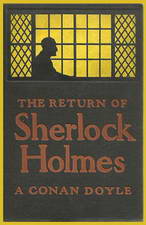 The Return of Sherlock Holmes
The Return of Sherlock Holmes
A young gambler is found shot dead in a closed room. Dr. Watson, who still mourns the disappearance of his famous friend is intrigued enough to step out of his house and take a look at the crime scene. A crowd has gathered there, curiously gazing up at the room where the crime is supposed to have taken place. Watson inadvertently jostles against an elderly, deformed man and knocks a stack of books from the fellow's hand. The man curses Watson vilely and disappears into the throng. It suddenly occurs to Watson that one of the books that he had helped the stranger pick up had seemed familiar... | |
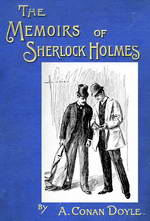 The Memoirs of Sherlock Holmes
The Memoirs of Sherlock Holmes
For more than a century and a quarter, fans of detective fiction have enjoyed the doings of the iconic sleuth, Mr. Sherlock Holmes. In the company of his faithful companion, Dr Watson, Holmes has consistently delighted generations of readers. Created by a Scottish writer and physician, Sir Arthur Conan Doyle, this immortal private eye has solved cases for kings and commoners, lovely damsels and little old ladies, engineers and country squires and a legion of others who come to him in distress and perplexity... | |
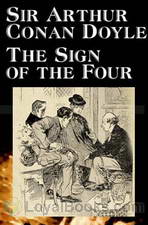 The Sign of the Four
The Sign of the Four
A secret shared by four convicts and two prison guards, a daughter in search of her missing father, a strange gift of a single pearl received every year, a fabulous treasure buried in the ancient Agra Fort in India, an eccentric detective being consulted to solve a deadly puzzle. All these events are set against the turbulent backdrop of the Great Indian Mutiny of 1857 in the second Sherlock Holmes novel by Sir Arthur Conan Doyle, The Sign of the Four. Mary Morstan, a lovely young woman, comes to the Baker Street lodgings shared by Holmes and Dr Watson... | |
 His Last Bow
His Last Bow
The disappearance of a German spy and the gathering storm that foretells the prelude to World War I is what greets you in this riveting book. The further you read the more mysteries unfold like secret submarine plans with some pages missing found in the hands of a corpse. There's also family insanity in Cornwall, a dead Spaniard and mafia hiding in an empty London flat. His Last Bow was published in the Strand Magazine circa 1908 and included several other short stories as well. Even during Sir Arthur Conan Doyle's own lifetime, Holmes had acquired cult status... | |
 The Valley of Fear
The Valley of Fear
Doyle's final novel featuring the beloved sleuth, Sherlock Holmes, brings the detective and his friend to a country manor where they are preceded by either a murder or a suicide. A secretive organization lies culprit and an infiltration of it is in order. | |
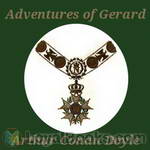 The Adventures of Gerard
The Adventures of Gerard
These lesser known stories were penned by Conan Doyle during the period between killing off Sherlock Holmes in 1893 and reluctantly resurrecting him some ten years later. The swashbuckling, eponymous hero, Etienne Gerard, is one of Napoleon's gallant French Hussars, who considers himself the finest of them all. Through these "Boys Own Adventures", Conan Doyle pokes gentle fun at both the French and the English. This is the second volume containing eight adventures. | |
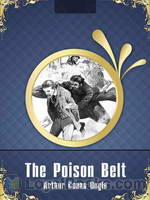 The Poison Belt
The Poison Belt
Three years after the events that took place in The Lost World, Professor Challenger urgently summons his fellow explorers (Professor Summerlee, Lord John Roxton, and reporter E.D. Malone) to a meeting. Oddly, he requires each to bring an oxygen cylinder with him. What he soon informs them is that from astronomical data and just-received telegraphs of strange accidents on the other side of the world, he has deduced that the Earth is starting to move through a region of space containing something poisonous to humankind... | |
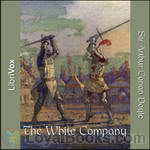 The White Company
The White Company
Set during the Hundred Years’ War with France, The White Company tells the story of a young Saxon man who is learning what it is to be a knight. Raised by Cistercian Monks and rejected by a violent elder brother, Alleyn Edricson takes service with one of the foremost knights in the country. When Alleyn falls in love with the knight’s daughter, he must prove himself to be a courageous and honourable knight before he can win her hand. Alleyn and his friends set forth with the other men-at-arms to join Prince Edward in Bordeaux, from where they will take part in the Prince’s campaign into Spain... | |
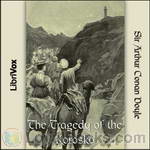 The Tragedy of the Korosko
The Tragedy of the Korosko
| |
 The Great Shadow
The Great Shadow
Set in an English-Scottish border village during the waning days of the Napoleonic era, this adventure story introduces us to Jock Calder, whose quiet way of life is shattered when a mysterious stranger steps ashore near his home. The stranger changes forever the lives of Jock, his cousin Edie, and his best friend Jim, sending the young men into the jaws of the final battle to defeat The Great Shadow that threatens to devour the whole of Europe. Don't look for Sherlock Holmes in this well-written tale, but do expect a wonderful glimpse of life at the end of the Napoleonic era, including an exciting rendition of The Battle of Waterloo. (Introduction by Christine Dufour) | |
By: Jules Verne (1828-1905) | |
|---|---|
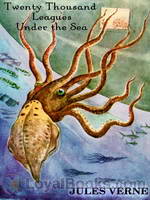 Twenty Thousand Leagues Under the Sea
Twenty Thousand Leagues Under the Sea
An early science fiction novel written by the second most translated author, French writer Jules Verne, the classic tale depicts an incredible sea expedition on board a state-of-the-art submarine. First published in 1870 and a part of the Voyages Extraordinaires series, the novel is regarded as one of the most thrilling adventure stories and one of Verne’s greatest pieces of work. Immersed in themes of exploration, avant-garde technology, and man’s insatiable desire for knowledge and scientific progression, Twenty Thousand Leagues Under the Sea has been an influence for many writers as well as an inspiration for numerous film adaptations... | |
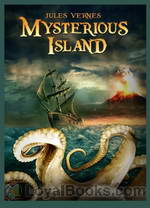 The Mysterious Island
The Mysterious Island
The Mysterious Island is another exquisite novel written by the master of adventure writing, Jules Verne. The novel has been seen as the sequel to two other famous novels written by the same author: Twenty Thousand Leagues Under the Sea and In Search of the Castaway. The story revolves around five Americans who live in a dark and harsh environment as prisoners of the American Civil War. Depleted by famine and death all around them, the five war prisoners take a big risk and escape by hijacking a hot air balloon... | |
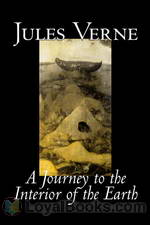 A Journey to the Interior of the Earth
A Journey to the Interior of the Earth
A historical manuscript penned by a medieval Norse poet. A mysterious code. Three intrepid explorers. A subterranean world filled with prehistoric creatures and proto-humans. These are some of the brilliant ideas that are superbly blended in A Journey to the Interior of the Earth by Jules Verne. Jules Verne, the French writer who created several works of science fiction, adventure stories and very popular novels, wrote A Journey to the Interior of the Earth in 1864. Some of his other books explore different aspects of geography, space and time travel... | |
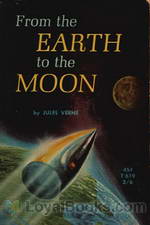 From the Earth to the Moon
From the Earth to the Moon
One of the earliest examples of literature written in the science fiction genre, From the Earth to the Moon is a part of the Voyages Extraordinaires series by French novelist Jules Verne. Written more than a century before the Apollo mission, Verne’s classic is somewhat a prophetic novel of man’s travel to the moon with its thorough and descriptive detail. A remarkable blend of action, humor, science, and audacious schemes, the timeless classic is sure to fascinate with its unique vision of lunar exploration... | |
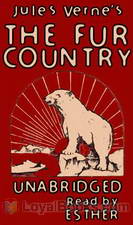 The Fur Country
The Fur Country
The Hudson's Bay Company is one of the earliest corporations in the world and the oldest commercial organization in North America. It began as a fur trading company in 1670 and today owns a variety of retail corporations selling a diverse range of goods. In The Fur Country by Jules Verne, the plot describes how a team of Hudson's Bay Company members travel through the Northwest Territory of Canada with the aim of establishing a mission on the Arctic Circle. The members are a mixed bunch. One of the ladies, Paulina Barnett, seeks adventure, while a meteorologist Thomas Black hopes to view a spectacular solar eclipse scheduled to occur during their travel... | |
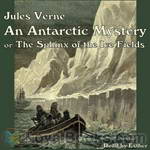 An Antarctic Mystery or The Sphinx of the Ice Fields
An Antarctic Mystery or The Sphinx of the Ice Fields
A wonderful coming together of two writers who wrote their books more than half a century apart. Neither of them had ever visited the remote islands they were writing about yet they provided inspiration for a couple of exciting adventure tales. In 1838, Edgar Allan Poe published The Narrative of Arthur Gordon Pym of Nantucket. It was the only complete novel published by the American author. It was the story of a young boy who stows away on board a whaling ship and it goes on to relate the events that follow... | |
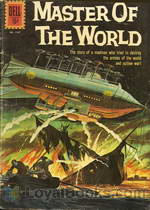 The Master of the World
The Master of the World
Published in 1904, The Master of the World is the penultimate novel in the Voyages Extraordinaires series, by renowned French novelist and pioneer of science fiction, Jules Verne. The novel acts as a sequel to Verne’s novel Robur the Conqueror, and consequently brings back some of its most notable characters, including the brilliant, yet villainous inventor Robur. Set in the summer of 1903, the adventure kicks off when a string of enigmatic events have been reported in the western part of North Carolina, leaving residents in fear of a possible volcanic eruption, even though the Blue Ridge Mountains are known to be non-volcanic ... | |
 Five Weeks in a Balloon
Five Weeks in a Balloon
First published in 1863, Five Weeks in a Balloon depicts an insightful journey undertaken by a group of intrepid explorers into the partly uncharted African continent, as they aim to explore its exotic wonders. Apart from concentrating on themes including exploration, loyalty, friendship, determination, and honor, the novel also offers an endearing set of jovial characters and vivid imagery. Furthermore, the novel is the first book in Verne’s distinguished Voyages Extraordinaires series. The adventure begins when Dr... | |
 In Search of the Castaways
In Search of the Castaways
The book tells the story of the quest for Captain Grant of the Britannia. After finding a bottle cast into the ocean by the captain himself after the Britannia is shipwrecked, Lord and Lady Glenarvan of Scotland decide to launch a rescue expedition. The main difficulty is that the coordinates of the wreckage are mostly erased, and only the latitude (37 degrees) is known.Lord Glenarvan makes it his quest to find Grant; together with his wife, Grant’s children and the crew of his yacht the Duncan they set off for South America... | |
 Eight Hundred Leagues on the Amazon
Eight Hundred Leagues on the Amazon
First published in 1881, Eight Hundred Leagues on the Amazon is an adventure novel in two parts by Jules Verne, having a basis in codes and cryptography. Unlike many of his other stories, it is not a work of science fiction. Rather, it describes a voyage down the Amazon River on a large raft, or jangada). Many aspects of the raft, scenery, and journey are described in detail. | |
 Dick Sands the Boy Captain
Dick Sands the Boy Captain
Dick Sands, a youth of fifteen, must assume command of a ship after the disappearance of its captain. Nature’s forces combined with evil doings of men lead him and his companions to many dangerous adventures on sea and in Central Africa. | |
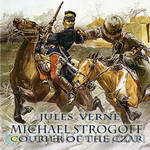 Michael Strogoff
Michael Strogoff
This is the account of the perilous mission of Michael Strogoff, courier for Czar Alexander II, who is sent from Moscow to the besieged city of Irkutsk, where the governor, brother of the Czar, has taken his last stand against a Tartar rebellion led by the fearsome Feofar-Khan. When telegraph lines are cut between the Russian Far East and the mainland, Strogoff must make his way through hostile territory to warn the governor of the return of the traitor Ivan Ogareff, a disgraced former officer who seeks vengeance against the Tsar’s family by the destruction of Irkutsk. | |
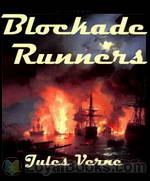 The Blockade Runners
The Blockade Runners
Writing at the end of the American Civil War, Verne weaves this story of a Scottish merchant who, in desperation at the interruption of the flow of Southern cotton due to the Union blockade, determines to build his own fast ship and run guns to the Confederates in exchange for the cotton piling up unsold on their wharves. His simple plan becomes complicated by two passengers who board his new ship under false pretenses in order to carry out a rescue mission, one which Capt. Playfair adopts as his own cause. This is going make the Rebels in Charleston rather unhappy with him.Sure, his new ship is fast - but can it escape the cannonballs of both North and South? | |
 Off on a Comet
Off on a Comet
The story starts with a comet that touches the Earth in its flight and collects a few small chunks of it. Some forty people of various nations and ages are condemned to a two-year-long journey on the comet. They form a mini-society and cope with the hostile environment of the comet (mostly the cold). The size of the 'comet' is about 2300 kilometers in diameter - far larger than any comet or asteroid that actually exists. | |
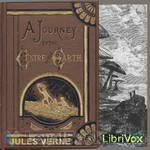 Journey to the Centre of the Earth
Journey to the Centre of the Earth
The story involves a German professor (Otto Lidenbrock in the original French, Professor Von Hardwigg in the most common English translation) who believes there are volcanic tubes going toward the center of the Earth. He, his nephew Axel (Harry), and their guide Hans encounter many adventures, including prehistoric animals and natural hazards, eventually coming to the surface again in southern Italy. | |
 The Underground City or The Child of the Cavern
The Underground City or The Child of the Cavern
Covering a time span of over ten years, this novel follows the fortunes of the mining community of Aberfoyle near Stirling, Scotland. Receiving a letter from an old colleague, mining engineer James Starr sets off for the old Aberfoyle mine, thought to have been mined out ten years earlier. Starr finds mine overman Simon Ford and his family living in a cottage deep inside the mine; he is astonished to find that Ford has made a discovery of the presence of a large vein of coal. Accompanying Simon Ford are his wife, Madge, and adult son, Harry. | |
 Doctor Ox's Experiment
Doctor Ox's Experiment
An early, light-hearted short story, published in 1872 by Jules Verne. It takes place in the Flemish town of Quiquendone, where life moves at an extraordinarily tranquil pace. Doctor Ox has offered to light the town with a new gas, but actually has other plans in place. | |
 Facing the Flag
Facing the Flag
Like The Begum's Millions, which Verne published in 1879, it has the theme of France and the entire world threatened by a super-weapon (what would now be called a weapon of mass destruction) with the threat finally overcome through the force of French patriotism. | |
 Topsy-Turvy
Topsy-Turvy
Topsy Turvy is a translation of Sans dessus dessous (1889) . This anonymous translation was first published by J. G. Ogilvie (New York, 1890). We meet our old friends Barbicane and J.T. Maston from “Earth to the Moon” who now give us their own approach to the topic of “global warming”. Although they are searching for coal and not oil, readers will find that the auction of the Arctic energy reserves has a definite 21st century ring. | |
 Adventures of Captain Hatteras, Part 2: The Field of Ice
Adventures of Captain Hatteras, Part 2: The Field of Ice
The novel, set in 1861, describes adventures of British expedition led by Captain John Hatteras to the North Pole. Hatteras is convinced that the sea around the pole is not frozen and his obsession is to reach the place no matter what. Mutiny by the crew results in destruction of their ship but Hatteras, with a few men, continues on the expedition. ( Wikipedia) | |
 The Voyages and Adventures of Captain Hatteras
The Voyages and Adventures of Captain Hatteras
| |
 Dick Sand A Captain at Fifteen
Dick Sand A Captain at Fifteen
| |
 The English at the North Pole Part I of the Adventures of Captain Hatteras
The English at the North Pole Part I of the Adventures of Captain Hatteras
| |
 Round the World in Eighty Days
Round the World in Eighty Days
| |
By: Robert Louis Stevenson (1850-1894) | |
|---|---|
 Kidnapped
Kidnapped
Kidnapped is the story of a 16-year old young man who is searching for his true birthright and is determined to make a fortune after the death of his parents. This timeless tale by Robert Louis Stevenson follows the life of David Balfour who leaves his home in Scotland after the death of his parents. First he meets his uncle for the first time in his life. His uncle is a very mean person who, at first, tried to kill David by devious means but then got him kidnapped onto a slave ship. In the ship, David makes friends with a Scottish rebel and together they successfully defeat the ship’s crew... | |
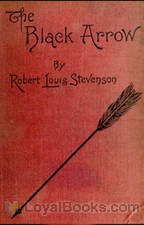 The Black Arrow; a Tale of Two Roses
The Black Arrow; a Tale of Two Roses
The Black Arrow tells the story of Richard (Dick) Shelton during the Wars of the Roses: how he becomes a knight, rescues his lady Joanna Sedley, and obtains justice for the murder of his father, Sir Harry Shelton. Outlaws in Tunstall Forest organized by Ellis Duckworth, whose weapon and calling card is a black arrow, cause Dick to suspect that his guardian Sir Daniel Brackley and his retainers are responsible for his father’s murder. Dick’s suspicions are enough to turn Sir Daniel against him, so he has no recourse but to escape from Sir Daniel and join the outlaws of the Black Arrow against him... | |
By: L. Frank Baum (1856-1919) | |
|---|---|
 Sky Island
Sky Island
Published in 1912, the fantasy novel focuses on the exciting adventures of Trot, Cap’n Bill and Button Bright, as they are accidentally transported to a mysterious island in the sky, where they encounter its eccentric residents, an unscrupulous ruler, and a strange set of laws. The story sets into motion when Trot, a little girl from the southern coast of California, and Cap’n Bill meet a peculiar young boy carrying a large umbrella. Introduced as Button Bright, the young boy reveals that... | |
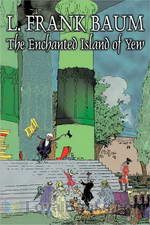 The Enchanted Island of Yew
The Enchanted Island of Yew
A fairy has become bored with her life, and convinces some young girls to transform her into a human boy so she can go on adventures. The adventures come fast and furious, as the newly-named Prince Marvel explores the surrounding kingdoms. A masochistic squire accompanies Marvel, helping him with assorted kings, knights, dragons, and other medieval menaces along the way. | |
 American Fairy Tales
American Fairy Tales
This collection of fantasy stories was originally serialized in regional newspapers, prior to being published as a complete volume. The stories, as critics have noted, lack the high-fantasy aspect of the best of Baum’s work, in Oz or out. With ironic or nonsensical morals attached to their ends, their tone is more satirical, glib, and tongue-in-cheek than is usual in children’s stories; the serialization in newspapers for adult readers was appropriate for the materials. (Introduction by Wikipedia and Matthew Reece) | |
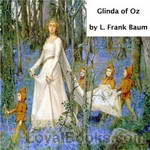 Glinda of Oz
Glinda of Oz
Glinda of Oz is the fourteenth Land of Oz book and is the last one written by the original author L. Frank Baum, although the series was continued after his death by several other authors. Dorothy and Ozma discover that a war is brewing in a distant and unexplored part of Oz, between two mysterious races, the Flatheads and the Skeezers. The girls set out to try to prevent the fighting, not knowing what dangers await them. | |
By: H. G. Wells (1866-1946) | |
|---|---|
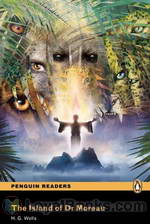 The Island of Dr. Moreau
The Island of Dr. Moreau
One of the first instances of science fiction, Wells’ classic tale published in 1986 examines various controversial philosophical issues active at the time of its publication, most notable being the implications of vivisection and degeneration. Narrated by its everyman protagonist Edward Prendick, the novel follows the events of his stay at a mysterious island, home to ghastly secrets, horrors, and incomprehensible experiences. Furthermore, the novel features innovative themes which have become iconic in the modern science fiction genre, including moral and ethical responsibility, evolution, and man’s interference with the course of nature... | |
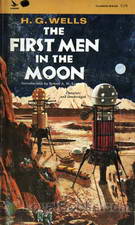 The First Men in the Moon
The First Men in the Moon
Written nearly seven decades before Neil Armstrong's historic “Giant leap for Mankind” this book by one of the most influential sci-fi writers in English is an interesting read. The First Men in the Moon by Herbert George Wells, the English author who is today called the Father of Science Fiction, describes a strange and fantastic voyage. Businessman and budding playwright, John Bedford takes a sabbatical from his work and decides to write a play. He moves to a lonely cottage in Kent where he hopes to come up with a theatrical masterpiece... | |
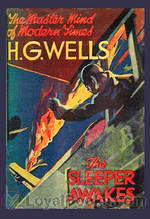 The Sleeper Awakes
The Sleeper Awakes
Originally serialized from 1898 to 1903, Wells later made some crucial changes to the piece to create a flawless dystopian science fiction novel published in 1910 and renamed The Sleeper Awakes. The novel focuses on an Englishman, who falls in a deep sleep lasting two centuries, and sees him wake up in an unrecognizable setting and extremely wealthy. An enthralling tale of dystopian society depicted through a colorful imagination, The Sleeper Awakes concentrates on topics including dystopia, political power, religion, plutocracy, and individual and social awakening... | |
By: Jack London (1876-1916) | |
|---|---|
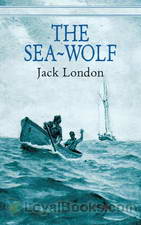 The Sea Wolf
The Sea Wolf
A maritime classic acclaimed for its exciting adventure, The Sea Wolf offers a thrilling tale of life at sea, while exploring the many difficulties that may erupt on board a ship captained by a brutally hedonistic and controlling individual. Additionally, the psychological adventure novel covers several themes including mutiny, existentialism, individualism, brutality, and the intrinsic will to survive. The novel sets into motion when its protagonist, the soft and cultivated scholar Humphrey van Weyden, is witness to a precarious collision between his ferry and another ship... | |
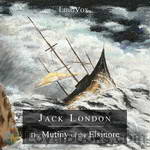 The Mutiny of the Elsinore
The Mutiny of the Elsinore
This is the story of a voyage of a sailing ship from Baltimore to Seattle, east-to-west around Cape Horn in the winter. It is set in 1913 and the glory days of “wooden ships and iron men” are long over. The Elsinore is a four-masted iron sailing vessel carrying a cargo of 5000 tons of coal. She has a “bughouse” crew of misfits and incompetents. This book was published in 1915 and some actions of some of the characters seem odd to us today. There is romance, but it is strangely platonic. Two important characters disappear with no real explanation... | |
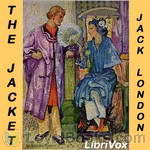 The Jacket (or Star Rover)
The Jacket (or Star Rover)
This book by Jack London was published under the name of "The Jacket" in the UK and "The Star Rover" in the US. A framing story is told in the first person by Darrell Standing, a university professor serving life imprisonment in San Quentin State Prison for murder. Prison officials try to break his spirit by means of a torture device called "the jacket," a canvas jacket which can be tightly laced so as to compress the whole body, inducing angina. Standing discovers how to withstand the torture by entering a kind of trance state, in which he walks among the stars and experiences portions of past lives... | |
 Burning Daylight
Burning Daylight
Burning Daylight, Jack London's fictional novel published in 1910, was one of the best selling books of that year and it was his best selling book in his lifetime. The novel takes place in the Yukon Territory in 1893. The main character, nicknamed Burning Daylight was the most successful entrepreneur of the Alaskan Gold Rush. The story of the main character was partially based upon the life of Oakland entrepreneur "Borax" Smith. (Wikipedia) | |
 When God Laughs, and Other Stories
When God Laughs, and Other Stories
This collection of Jack London's short stories touches on a variety of topics, from his love of boxing, to relationships between criminals, to the trials of life and travel on many frontiers, to an allegory about a king who desired a nose. London is considered a master of the short story, a form much more to his liking and personality than his novels. He was active and quick of mind and the short story suited him well. | |
 The Son of the Wolf
The Son of the Wolf
| |
 Stories of Ships and the Sea
Stories of Ships and the Sea
5 Exciting short stories by one of Americas best story tellers | |
 Daughter of the Snows
Daughter of the Snows
In Jack London's first novel, he tells the story of Frona Welse, a strong and interesting heroine, "a Stanford graduate and physical Valkyrie," who heads to the Yukon gold fields after creating a stir in her hometown by being strong and forthright and by befriending the town's prostitute. In the course of her adventures, she finds herself at the distaff point of a love triangle. This novel contains very overt racial and gender stereotypes and as such reflects the attitudes growing in society at the time it was written. It is the practice at Librivox to record works as they stand, without judgment. | |
 Dutch Courage and Other Stories
Dutch Courage and Other Stories
Jack London was quoted as saying, "I've never written a line that I'd be ashamed for my young daughters to read, and I never shall write such a line!" After his death in 1916, his wife Charmian assembled a collection of stories, most of which he had written for young readers, but at least one of which was for more mature readers, "Whose Business is to Live." Like most of London's work, his short stories could be read by young readers and then again when they were older with mature minds. These stories draw from London's own extensive experience in the world and demonstrate the dictum that "good writing is good writing" no matter for whom it was written. | |
 A Son Of The Sun
A Son Of The Sun
| |
 Tales of the Fish Patrol
Tales of the Fish Patrol
Wildest among the fisher-folk may be accounted the Chinese shrimp-catchers. It is the habit of the shrimp to crawl along the bottom in vast armies till it reaches fresh water, when it turns about and crawls back again to the salt. And where the tide ebbs and flows, the Chinese sink great bag-nets to the bottom, with gaping mouths, into which the shrimp crawls and from which it is transferred to the boiling-pot. This in itself would not be bad, were it not for the small mesh of the nets, so small that the tiniest fishes, little new-hatched things not a quarter of an inch long, cannot pass through... | |
By: Edgar Rice Burroughs (1875-1950) | |
|---|---|
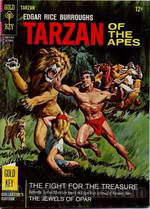 Tarzan of the Apes
Tarzan of the Apes
An aristocratic English family is marooned off the coast of West Africa. They find their way into the interior of the dense jungle that lines the coast and here, Lord Greystoke is killed by a predatory ape. Lady Greystoke survives with her infant boy, but in a few months, she too succumbs to the perils of jungle life. The baby is adopted by a maternal she-ape who nurses him along with her own child. This marks the dawn of a legend – Tarzan of the Apes. Edgar Rice Burroughs was an American novelist who turned to fiction writing after an unsuccessful stint as a pencil sharpener salesman... | |
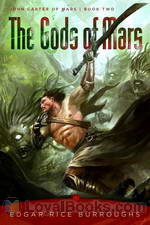 The Gods of Mars
The Gods of Mars
Burroughs’ second book in the classic Barsoom series, The Gods of Mars is a scientific fiction novel following the adventures of John Carter as he returns to Mars after a ten year hiatus in the hope of being reunited with his wife, child and the Red Martian people. First published as a five-part serial in a pulp magazine in the course of 1913, the novel was later published as a whole in 1918. A tale of audacity, honor, optimism, and perseverance, Burroughs successfully builds on to the previous book allowing a broader view of the Red Planet... | |
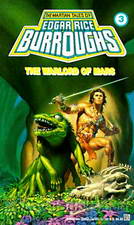 Warlord of Mars
Warlord of Mars
Warlord of Mars by Edgar Rice Burroughs was first published in 1913. It was the third book in an eleven part series known as the Barsoom Chronicles which relate to a sequence of exciting adventure tales set on the fictional planet of Barsoom. In the Barsoom series, Mars, assumed to be older than Earth, is a dying planet. “Barsoom” is the native word for Mars in the Martian language. The stories first appeared in serialized form in various magazines like All-Story, Argosy, Amazing Stories and The Blue Book... | |
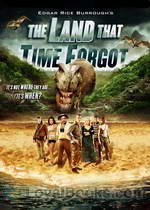 The Land that Time Forgot
The Land that Time Forgot
Off the coast of Greenland, a man finds a floating thermos bottle. Wedged tightly inside is a sheaf of papers covered with minute handwriting. As he begins to read, a fantastic tale begins to unwind. The writer, on his way to a WWI battlefield was shipwrecked and his entire regiment except for a woman and his faithful dog are killed. The three are rescued by a passing British tug, but fall prey to the schemes of a German spy aboard. They are then captured by the crew of a German U-boat. After many near mishaps, they sail towards Greenland... | |
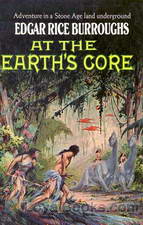 At the Earth's Core
At the Earth's Core
This is the first book in the Pellucidar series. Pellucidar is a fictional Hollow Earth milieu invented by Edgar Rice Burroughs for a series of action adventure stories. The stories initially involve the adventures of mining heir David Innes and his inventor friend Abner Perry after they use an “iron mole” to burrow 500 miles into the earth’s crust. (adapted from Wikipedia) | |
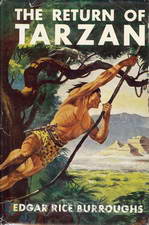 The Return of Tarzan
The Return of Tarzan
The novel picks up where Tarzan of the Apes left off. The ape man, feeling rootless in the wake of his noble sacrifice of his prospects of wedding Jane Porter, leaves America for Europe to visit his friend Paul d’Arnot. On the ship he becomes embroiled in the affairs of Countess Olga de Coude, her husband, Count Raoul de Coude, and two shady characters attempting to prey on them, Nikolas Rokoff and his henchman Alexis Paulvitch. | |
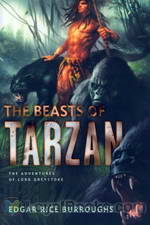 The Beasts of Tarzan
The Beasts of Tarzan
Originally featured as a five-part serial in All-Story Cavalier magazine in 1914 and later published in book form in 1916, The Beasts of Tarzan is the third book in the gripping Tarzan series. Shifting from London to the natural African scenery, the novel follows Tarzan as he finds himself in the wicked ploy of old enemies, which launches him into a mission to save his beloved wife and son, while also caring for his own welfare. Furthermore, he must go back to his previous life and reclaim his position as king of the jungle... | |
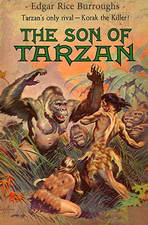 Son of Tarzan
Son of Tarzan
This is the fourth of Burrough’s Tarzan novels. Alexis Paulvitch, a henchman of Tarzan’s now-deceased enemy, Nikolas Rokoff, survived his encounter with Tarzan in the third novel and wants to even the score. (adapted from Wikipedia) | |
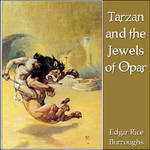 Tarzan and the Jewels of Opar
Tarzan and the Jewels of Opar
This is the fifth of Burrough’s Tarzan novels. Tarzan finds himself bereft of his fortune and resolves to return to the jewel-room of Opar, leaving Jane to face unexpected danger at home. | |
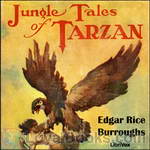 Jungle Tales of Tarzan
Jungle Tales of Tarzan
Jungle Tales of Tarzan is a collection of twelve loosely-connected short stories written by Edgar Rice Burroughs, comprising the sixth book in order of publication in his series about the title character Tarzan. Chronologically, the events recounted in it actually occur between chapters 12 and 13 of the first Tarzan novel, Tarzan of the Apes. | |
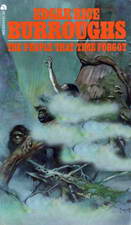 The People that Time Forgot
The People that Time Forgot
The People that Time Forgot is a science fiction novel, the second of Edgar Rice Burroughs’ “Caspak” trilogy. The first novel ended with the hero writing a manuscript of his adventures and casting it out to sea in his thermos bottle. The second novel begins with the finding of the manuscript and the organization of a rescue expedition. | |
 Pellucidar
Pellucidar
Pellucidar is a fictional “Hollow Earth” milieu invented by Edgar Rice Burroughs for a series of action adventure stories. The stories initially involve the adventures of mining heir David Innes and his inventor friend Abner Perry after they use an “iron mole” to burrow 500 miles into the earth’s crust. This is the second book in the series. | |
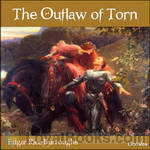 The Outlaw of Torn
The Outlaw of Torn
The story is set in 13th century England and concerns the fictitious outlaw Norman of Torn, who purportedly harried the country during the power struggle between King Henry III and Simon de Montfort. Norman is the supposed son of the Frenchman de Vac, once the king's fencing master, who has a grudge against his former employer and raises the boy to be a simple, brutal killing machine with a hatred of all things English. His intentions are partially subverted by a priest who befriends Norman and teaches him his letters and chivalry towards women... | |
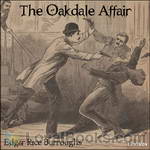 The Oakdale Affair
The Oakdale Affair
Edgar Rice Burroughs’ Jack London / H.H. Knibbs-inspired, selfless, poetry-spouting, hobo character, Bridge, makes another appearance in the novellete, The Oakdale Affair (original title, Bridge and the Oskalooska Kid.) Joining the poetic hobo in this gothic-like tale are many other unusual elements: dark mysterious nights, a deserted haunted farmhouse, a violent thunderstorm, the Oskalooska Kid, a nameless girl, thieves and murderers, Beppo the bear, and other surprises.The Oakdale Affair is a deep mystery and would puzzle even Sherlock Holmes.(Introduction by Ralph Snelson) | |
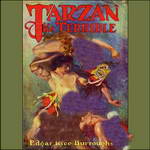 Tarzan the Terrible
Tarzan the Terrible
In the previous novel, during the early days of World War I, Tarzan discovered that his wife Jane was not killed in a fire set by German troops, but was in fact alive. In this novel two months have gone by and Tarzan is continuing to search for Jane. He has tracked her to a hidden valley called Pal-ul-don, which means "Land of Men." In Pal-ul-don Tarzan finds a real Jurassic Park filled with dinosaurs, notably the savage Triceratops-like Gryfs, which unlike their prehistoric counterparts are carnivorous... | |
 The Mad King
The Mad King
Shades of The Prisoner of Zenda! All our old friends are here—the young king, the usurping uncle and his evil henchman, the beautiful princess, the loyal retainer and the unwilling imposter. What more could you Hope for? This fast-paced story stays far away from Tarzan’s jungle or the inner world of Pellucidar. | |
 Tarzan the Untamed
Tarzan the Untamed
This book follows Tarzan and the Jewels of Opar chronologically. The action is set during World War I. While away from his plantation home in East Africa, invading German troops destroy it and kill his wife Jane and the Waziri warrior Wasimbu who is left crucified. Tarzan's search for vengeance is filled with much danger, many fierce fights and tons of action as he becomes active in the war on the British side. This is really just the start of the exciting adventures portrayed in this book. | |
By: Homer | |
|---|---|
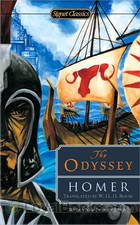 The Odyssey
The Odyssey
A wandering king who's a war-hero doomed to roam the earth by a vengeful God, a plethora of fantastic experiences, a wife battling the invasion of suitors who wish to replace her missing husband, a son in search of his father - the Odyssey is a rich tapestry of incredible experiences and unforgettable characters. A must-read classic for anyone who wants to understand the fundamentals of Western mythology, it is a sequel to the Illiad which recounts the magnificent saga of the Trojan War. The Odyssey continues on, describing the trials and tribulations of the Greeks under the leadership of Odysseus... | |
By: Rudyard Kipling (1865-1936) | |
|---|---|
 Kim
Kim
Present day readers live in a world that's emerged from the Cold War and the endless rivalry of the Super Powers but this book goes back and traces the origins of the conflict and mutual antagonism between nations. Kim by Rudyard Kipling is set against the background of the Great Game as it was called the tug-of-war between Britain and Russia for the control of Central Asia. The novel's action takes place during the Anglo-Afghan Wars of 1839-42. The novel's sweeping narrative, the depth of character and the sheer historical scale make it a first rate story... | |
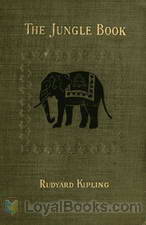 The Jungle Book
The Jungle Book
Originally written for his young daughter Josephine, who died tragically aged six, The Jungle Book by Rudyard Kipling is a collection of short stories which were published separately in magazines before being compiled into a book. The stories are in the form of fables, where animals communicate and speak to each other as humans do and the purpose of each story was to convey a moral or message to the reader. Modern readers would be more familiar with the Disney animated version in which Mowgli the little “man-cub” is raised by wolves... | |
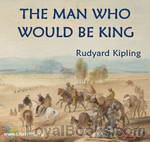 The Man Who Would Be King
The Man Who Would Be King
The Man Who Would Be King tells the story of two British adventurers in British India who become kings of Kafiristan, a remote part of Afghanistan. It was inspired by the exploits of James Brooke, an Englishman who became the “white Raja” of Sarawak in Borneo, and by the travels of American adventurer Josiah Harlan, who claimed the title Prince of Ghor. The story was first published in The Phantom Rickshaw and other Tales (Volume Five of the Indian Railway Library, published by A H Wheeler & Co of Allahabad in 1888)... | |
 Puck of Pook's Hill
Puck of Pook's Hill
Puck of Pook’s Hill is a children’s book by Rudyard Kipling, published in 1906, containing a series of short stories set in different periods of history. The stories are all told to two children living near Pevensey by people magically plucked out of history by Puck. | |
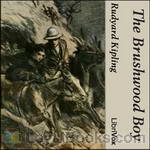 The Brushwood Boy
The Brushwood Boy
The experiences in public school, Sandhurst and military life in India of Major George Cottar together with his adventures in the dream world he discovers and frequents. | |
By: Miguel de Cervantes Saavedra (1547-1616) | |
|---|---|
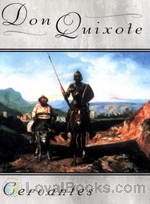 Don Quixote
Don Quixote
This is volume 1 of 2. One of the most quirky, eccentric and endearing heroes to ever be depicted in fiction, the chivalrous Don Quixote is sure to capture hearts while bringing tears of laughter to your eyes. If you've never encountered the Knight from La Mancha before, get set for a delightful sojourn through the Spanish countryside, across the fertile countryside of Central Spain. Don Quixote by Miguel de Cervantes Saavedra was an immediate success when it was first published in 1605 and won huge financial and literary success for its creator, an impoverished writer and poet... | |
By: Kenneth Grahame (1859-1932) | |
|---|---|
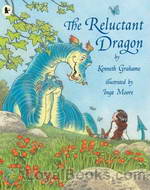 The Reluctant Dragon
The Reluctant Dragon
Regarded as one of Grahame’s most distinguished short stories, the children’s classic was first published in 1898 and featured in Dream Days, a reminiscent short story collection for children, and has also been adapted into a feature film from Walt Disney Productions. The story centers on the events following the discovery of a dragon living inside a cave near a small town, which its residents perceive as dangerous and a threat to their safety, whereas as a young boy goes out of his way to prove the dragon’s harmless nature... | |
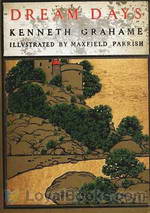 Dream Days
Dream Days
Dream Days is a collection of children’s fiction and reminiscences of childhood written by Kenneth Grahame. A sequel to Grahame’s 1895 collection The Golden Age (some of its selections feature the same family of five children), Dream Days was first published in 1898 under the imprint John Lane: The Bodley Head. (The first six selections in the book had been previously published in periodicals of the day—in the Yellow Book, the New Review, and in Scribner’s Magazine in the United States.) The book is best known for its inclusion of Grahame’s classic story The Reluctant Dragon... | |
By: Alexandre Dumas (1802-1870) | |
|---|---|
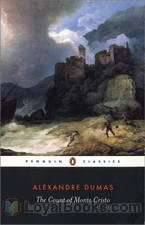 The Count of Monte Cristo
The Count of Monte Cristo
Written by French author Alexandre Dumas, The Count of Monte Cristo follows the life of Edmond Dantes as he embarks on a journey of revenge after being wrongly imprisoned and set up by none other than his so-called friends. Set during the years after the fall of Napoleon’s empire, the story unwinds in several locations including Paris, Marseilles, Rome, Monte Cristo and Constantinople. A handsome young sailor and soon to be ship captain Edmond Dantes seems to have it all in life, as he returns to Marseilles to wed the love of his life and fiancée, the beautiful Mercedes... | |
 The Three Musketeers
The Three Musketeers
The Three Musketeers follows the adventures of the young Gascon nobleman, D’Artagnan and his three trusted friends who served as musketeers in the king’s regiment – Athos, Porthos & Aramis. Written by Alexandre Dumas, the book was a bestseller during the time of its publication and it remains so even today. It follows the timeless theme of friendship and bravery. The main protagonist of the story is D’Artagnan who travels to Paris to realize his dreams of becoming one of the musketeers for the king... | |
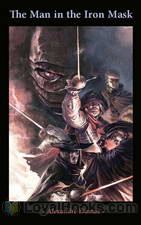 The Man in the Iron Mask
The Man in the Iron Mask
The Man in the Iron Mask by Alexandre Dumas is part of the novel The Vicomte of Bragelonne: Ten Years After, published in serial form between 1857-50. It is also the last of the D'Artagnan stories written by Dumas and the three musketeers are the real heroes of the story, though the title is given to the man in the iron mask. The story opens with Aramis (one of the musketeers who is now a priest) taking the last confession of a prisoner who is condemned to be executed soon. His confession comes as a thunderbolt to the former musketeer... | |
 Twenty Years After
Twenty Years After
First serialized from January to August, 1845, Twenty Years After is the second book in The D’Artagnan Romances, and follows the gallant adventures of the musketeers, as they are once again summoned to alleviate the various threats that lurk in the political scene of France, as the country is threatened by a possible uprising. Enriched with exciting and well-developed characters, the novel adds more detail to its familiar characters, as the musketeers have matured and are portrayed in a more introspective light... | |
 The Vicomte De Bragelonne
The Vicomte De Bragelonne
After The Three Muskateers and Twenty Years After the adventurous story of Athos, Porthos, Aramis and D'Artagnan continues!The Vicomte of Bragelonne: Ten Years Later (French: Le Vicomte de Bragelonne ou Dix ans plus tard) is the last of the Musketeer novels. It is usually divided into four volumes and this first volume contains chapters 1-75. | |
 The Black Tulip
The Black Tulip
The Black Tulip, written by Alexandre Dumas père and published in 1850, is a historical novel placed in the time of Tulipmania in the Netherlands. The novel begins with the 1672 politically motivated mob lynching of the de Witt brothers and then follows the story of Cornelius van Baerle, godson of Cornelius de Wit. Cornelius Van Baerle has joined the race to breed a truly black tulip – and to win the prize of 100,000 guilders, as well as fame and honour. As he nears his goal he is jailed and then of course rescued – by the beautiful Rosa, daughter of the jailer. | |
 Louise de la Valliere
Louise de la Valliere
After The Three Muskateers and Twenty Years After the adventurous story of Athos, Porthos, Aramis and D'Artagnan continues! The Vicomte of Bragelonne: Ten Years Later (French: Le Vicomte de Bragelonne ou Dix ans plus tard) is the last of the Musketeer novels. It is usually divided into four volumes and this third volume contains chapters 141-208. | |
 Ten Years Later
Ten Years Later
After The Three Muskateers and Twenty Years After the adventurous story of Athos, Porthos, Aramis and D'Artagnan continues!The Vicomte of Bragelonne: Ten Years Later (French: Le Vicomte de Bragelonne ou Dix ans plus tard) is the last of the Musketeer novels. It is usually divided into four volumes and this second volume contains chapters 76-140. | |